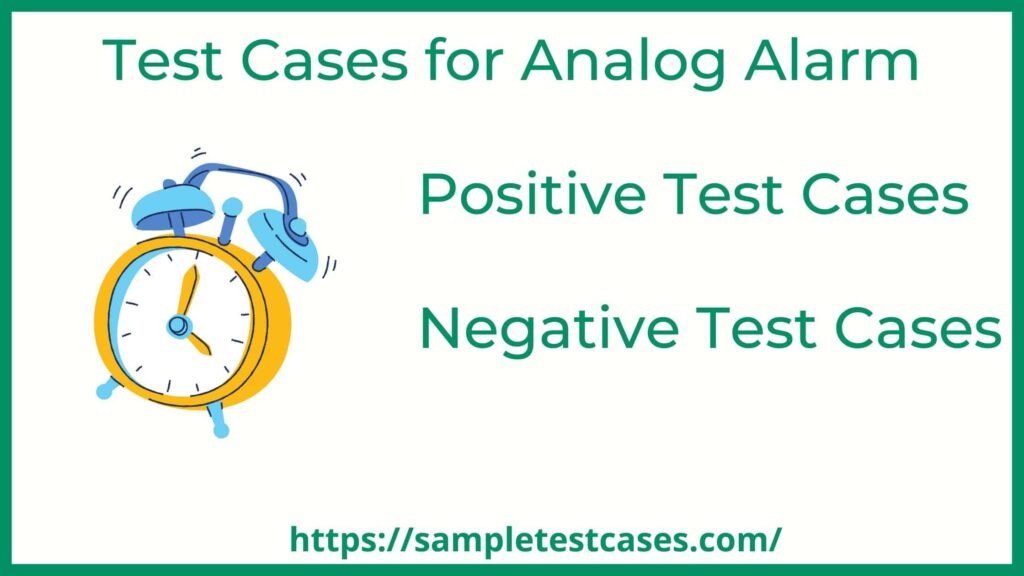An analog alarm is a traditional clock-based alarm that uses a ticking mechanism to keep time and sound an alarm when the set time reached. In this blog post, we’ll discuss the various test cases for analog alarm that can help to validate the functionality of an analog alarm.
Positive Test Cases For Analog Alarm
- Verifying for accurate timekeeping, both when the clock is running and when the alarm set.
- Verifying for proper alarm function, including the ability to set and adjust the alarm time, and the ability to turn the alarm on and off.
- Verifying for the alarm sound volume and quality.
- Verifying for the snooze function, if it has one.
- Verifying for the clock’s durability and resistance to damage from being dropped or bumped.
- Verifying for the clock’s resistance to external factors such as dust and moisture.
- Verifying for the clock’s resistance to power loss, such as battery leakage.
- Verifying for the clock’s ease of use and readability of the time display.
- Verifying for the clock’s aesthetic appearance, including the finish and color.
- Verifying for the clock’s compliance with any relevant safety regulations or standards.
Negative Test Cases For Analog Alarm
- Verify that the software should be able to handle incorrect time settings.
- Verify that the software should be able to handle a range of different alarm volumes.
- Verify that the software should have a functional snooze function that accurately pauses the alarm and resumes it after the specified interval.
- Verify that the software should be able to handle battery failure or low battery conditions and return an error message, if applicable.
- Verify that the software should be able to handle power interruptions and retain the set alarm time and settings.
- Verify that the software should be able to handle incorrect alarm tone selections and return an error message, if applicable.
Conclusion
In conclusion, writing comprehensive test cases for an analog alarm is critical to ensuring its functionality and accuracy. The test cases outlined in this post provide a starting point for testing the analog alarm. Regular testing and maintenance of the test cases required. So TE can ensure that the software continues to function as expected as new features are added or changes are made to the existing code.
